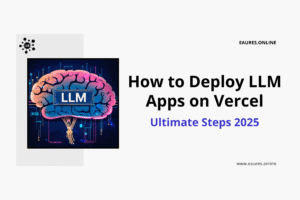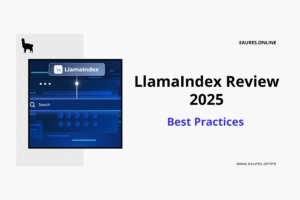Table of Contents
7 Best LangChain Templates for LLMs 2025
Why LangChain Templates for LLMs Matter in 2025
Large Language Models matured fast, but shipping reliable, maintainable applications still hinges on well‑designed scaffolding. That’s where LangChain Templates for LLMs earn their keep. Instead of starting from an empty file, you assemble proven building blocks—prompt orchestration, retrieval layers, tool interfaces, guardrails, evaluation, and deployment—into repeatable, auditable workflows. The result is faster time‑to‑value, fewer foot‑guns, and teams who can iterate confidently.
In 2025, modern LLM apps combine three capabilities: grounded reasoning (RAG), agentic tools (APIs, search, databases), and lifecycle operations (evaluation, tracing, and serving). The best LangChain Templates for LLMs capture these patterns with minimal glue code, clear configuration, and production‑grade ergonomics. Below you’ll find seven templates that cover the core use cases product teams and data organizations ship every week—RAG, analytics, browsing agents, multimodal understanding, summarization, deployment, and continuous evaluation.
How We Chose These 7 Templates
Selecting the “best” LangChain templates is about more than popularity. We score each candidate against six dimensions:
- Business fitness: Map to durable 2025 use cases (knowledge search, analytics, support automation, safety review).
- Architectural clarity: Separation of concerns between prompts, tools, indexes, and orchestration.
- Observability & testability: First‑class tracing, metrics, and automated evaluation so you can ship responsibly.
- Extensibility: Swappable vector stores, models, and tools without rewrites.
- Latency/throughput posture: Streamed UX, batching, and selective caching where it matters.
- Deployment ergonomics: A path from notebook to endpoint without reinventing the wheel.
If you’re also comparing ecosystem fit, it helps to compare LangChain vs LlamaIndex for RAG to see team workflows and performance trade‑offs, which you can do in this guide on LangChain vs LlamaIndex for RAG, agents, and production apps to inform framework selection before you commit.

Template #1 — Production RAG with LangGraph State
Best for: AI knowledge search, policy assistants, customer support copilots.
RAG remains the backbone of many LangChain Templates for LLMs, and the 2025 upgrade is stateful orchestration via LangGraph. A strong RAG template wires document loaders, chunking, embedding, and a vector store (FAISS, Chroma, Milvus, or pgvector) to a retrieval policy, and then drives the conversation with a graph state machine. You’ll typically see:
- Indexing pipeline: ETL to normalize PDFs, HTML, and Markdown; chunk + embed; write to your vector DB.
- Query policy: Hybrid search (dense + BM25), reranking, and source grounding with citations.
- LangGraph orchestration: Nodes for retrieve → synthesize → critique → finalize, where the state holds query, hits, and intermediate summaries.
- UX affordances: Streaming token output with “why these sources?” callouts and expand/collapse context.
Implementation notes. Start with a steady vector backend like FAISS for high‑speed similarity search or pgvector when you prefer managed Postgres and pgvector’s extension for simplicity. A template should expose knobs for chunk size, overlap, top‑k, hybrid weights, and reranker choice. For orchestration patterns, consult the official LangGraph materials in the LangGraph repository and adapt the state to your domain entities so later steps (like follow‑up questioning) have structured context to lean on.
Why it’s “best.” It’s composable, observable, and easy to harden. You can attach test suites, monitor grounding quality, and add plagiarism checks or policy filters without dismantling the core.
Template #2 — Text‑to‑SQL Analytics Agent (Warehouse Copilot)
Best for: BI self‑service, analyst copilots, ad hoc KPI exploration.
This is the most immediately valuable LangChain Templates for LLMs pattern for data‑heavy teams. The template couples schema introspection, a SQL generation agent, guardrails, and a visualization step. The agent plans the query, executes against your warehouse (Postgres, BigQuery, Snowflake), then explains and visualizes results. Correctness is managed with:
- Schema prompts/graphs: Keep a compact, updated schema snapshot (tables, columns, relationships).
- Safety rails: Restrict to
READqueries, enforce LIMIT, and surface a dry‑run plan. - Semantic caches: Memoize frequently asked questions for speed.
- Human‑in‑the‑loop: Provide a “review SQL” button for high‑impact queries.
If your team wants to go deeper on analytics automation, the step‑by‑step workflow in this guide on how to automate data analysis with Python and LLMs aligns perfectly with this template and shows how to combine validation, profiling, and explainability into a trustworthy experience.
Implementation notes. You can start with LangChain’s SQL toolkits and a ReAct‑style agent to plan → query → validate. Pair with a vector store of semantic snippets (column descriptions, KPI definitions). For details on function/tool calling semantics, see OpenAI’s function calling guide embedded in the design of many SQL agents, as explained in the OpenAI function calling documentation so you can map safe DB operations to callable tools declaratively.
Why it’s “best.” It unlocks business value quickly and reduces the backlog for data teams while staying audit‑friendly.
Template #3 — Web Search & ReAct Browsing Agent
Best for: Research assistants, market/competitive intelligence, sales prospecting.
A robust browsing agent template pairs a ReAct planner with web search tools, a browser fetcher (headless or API), and a synthesis step with citation tracking. Instead of dumping web pages into a prompt, the agent decomposes the question, runs targeted searches, reads selectively, and composes an answer with links. The strategy goes back to the ReAct pattern, well‑described in the ReAct paper by Yao et al. and adopted widely in LangChain agents.
Implementation notes. Your toolbelt might include a search API (Tavily, Bing), an HTML cleaner, and an extraction policy that preserves attribution. Add a “verify factual claims” loop that cross‑checks at least two independent sources for each key fact. A good template also logs tool traces to LangSmith for post‑hoc audits.
Why it’s “best.” Web‑aware agents are still the fastest way to bridge knowledge gaps beyond your RAG corpus, and the ReAct template emphasizes a transparent chain‑of‑thought structure without exposing the model’s private reasoning verbatim to end users.
If you’re refining prompts for tool‑using models across ecosystems, you can adopt a unified prompting flow to reduce redrafting time, as explained in this deep dive on Copilot and Claude prompting flow for 2025 to standardize context packing, formatting, and iteration.

Template #4 — Multimodal RAG (Docs + Images + Tables)
Best for: Compliance reviews, product catalogs, scientific literature, internal wikis with diagrams.
As models with vision matured, the strongest LangChain Templates for LLMs combine text retrieval with visual evidence. A multimodal RAG template handles PDF text and figure crops, table structure (via table extractors), and image embeddings for diagram search. The workflow looks like:
- Ingest: Split PDFs into text chunks, extract tables, and generate cropped images for figures.
- Index: Store text embeddings alongside metadata; store image embeddings in a compatible index.
- Retrieve: Query both modalities and fuse results with cross‑modal reranking.
- Synthesize: Ask the model to point to the figure/table that supports each claim, then render a concise answer with numbered evidence.
Implementation notes. Use a vector store that tolerates larger embeddings and metadata payloads—Milvus is a strong candidate when scale matters, as described on the Milvus project website, while lighter deployments often start with Chroma as introduced on the Chroma project site. Multimodal runners should stream partial results and let users expand the original image/table for verification.
Why it’s “best.” Many real‑world questions hinge on diagrams and tables; multimodal retrieval closes that gap and increases user trust by grounding answers visually.
Template #5 — Summarization & Meeting Notes (Map‑Reduce + LCEL)
Best for: Operations reports, podcast/article digests, meeting minutes with action items.
This classic template is still essential, but the 2025 version centers on the LangChain Expression Language (LCEL) so you can define summarization graphs declaratively and add evaluators inline. Start with a Map‑Reduce pattern for long inputs, then chain a tone & format pass that emits: executive summary, risks, decisions, and tasks. The pipeline is crisp to read and test because LCEL graphs make control flow explicit, as shown in the LCEL documentation.
Implementation notes. Let users choose the form (bullets, narrative, or both), and include content filters (PII scrub, redaction keywords). For enterprise deployments, wire an approval gate: the draft goes to a reviewer, who can accept or edit; the system then learns from those edits to tune prompts.
Why it’s “best.” No other template gets adopted across as many departments; its LCEL backbone also makes it the cleanest to maintain as volumes scale.
Template #6 — LangServe‑Ready Chatbot (From Notebook to Endpoint)
Best for: Turning prototypes into APIs, connect to front‑end chat UIs.
Your team needs a direct path from a working chain to a production endpoint. A LangServe‑ready template packages the chain, models, and dependencies into a FastAPI/ASGI app with streaming responses and well‑documented routes. It embraces structured inputs/outputs, health checks, and versioning. The canonical approach aligns with the LangServe project repository so you can deploy to your platform of choice without hand‑rolling servers.
Implementation notes. Use Pydantic schemas to define request/response bodies, include an /openapi.json contract, and expose a /stream route for SSE/WebSocket streaming. Pair it with LangSmith tracing for observability and CI hooks so any prompt tweak gets evaluated before you release.
If you are still deciding which model lineup fits your latency and quality budget, the Claude Sonnet 4 vs ChatGPT‑5 benchmark can help you calibrate decisions, as discussed in this head‑to‑head analysis on Claude Sonnet 4 vs ChatGPT‑5: Ultimate Benchmark so you pick the right default and fallback models for your API.
Why it’s “best.” It collapses the gap between a developer proof‑of‑concept and a stable, monitored service—and your front end stays decoupled from model churn.
Template #7 — Evaluation & CI with LangSmith (Quality Gates)
Best for: Teams who ship weekly and care about regression prevention.
Great LLM apps come with tests. This template weaves dataset management, grading prompts, regression suites, and dashboards into your development lifecycle. You store curated test sets, run batch evaluations on every change, and block releases if KPIs fall below thresholds. The pattern aligns with LangSmith practices; the public docs are an excellent starting point for workflows and graders, and you can explore patterns in the LangSmith documentation hub to design robust evaluation gates.
Implementation notes. Define grading rubrics (grounding, helpfulness, safety) and label a seed dataset that reflects your users’ tough cases. Use two layers of tests: fast heuristics for PRs and deeper batched evals nightly. Route traces into dashboards and attach “why failed?” drill‑downs to make fixes obvious.
Why it’s “best.” It’s the only template in this list that prevents silent quality drift over time and gives executives a crisp view of AI reliability.

Quick Comparison: The Seven Templates at a Glance
| Template | Primary Use Case | Orchestration | Data Backends | Deployment Path |
|---|---|---|---|---|
| Production RAG with LangGraph | Knowledge search | LangGraph | FAISS/Chroma/Milvus/pgvector | API + UI |
| Text‑to‑SQL Analytics Agent | BI copilot | Tool‑using agent (ReAct/Functions) | Warehouse + cache | API + Notebook |
| Web Search & ReAct Agent | Research | ReAct + tools | Web fetcher + parser | API |
| Multimodal RAG | Visual grounding | LangGraph + rerank | Vector DB + image embeddings | API + UI |
| Summarization & Notes | Content digestion | LCEL Map‑Reduce | Object store + cache | Batch + API |
| LangServe‑Ready Chatbot | Productization | LCEL or Agent | Any | ASGI/Serverless |
| Evaluation & CI with LangSmith | Quality gates | Batch eval | LangSmith datasets | CI/CD |
Choosing the Right LangChain Template for Your Use Case
Before you spin up any of these LangChain Templates for LLMs, choose by risk and ROI:
- User‑facing Q&A or support? Start with Production RAG so responses stay grounded in your sources.
- Data teams drowning in requests? Pick Text‑to‑SQL Analytics to convert business questions into safe warehouse queries.
- Open‑ended research? Begin with the Web Search & ReAct Agent and maintain an audit trail of sources.
- Heavy diagrams or tables? Use Multimodal RAG so evidence includes figures and structured tables.
- Ops & comms workflows? Ship Summarization & Notes to standardize updates quickly.
- Prototype ready for users? Wrap it in LangServe and connect your chat UI with streaming output.
- Scaling a portfolio of apps? Enforce Evaluation & CI so improvements do not cause regressions.
If you’re weighing stack choices early, it’s smart to compare LangChain vs LlamaIndex for specific RAG and agent scenarios using the analysis at this LangChain vs LlamaIndex developer guide so you start with the ecosystem your team can maintain.
Getting Started: From Zero to Working Template
You can bring any of these LangChain Templates for LLMs to life with a repeatable setup that scales from local dev to staging:
1) Initialize and Configure
- Create a repo with your favorite Python stack (Poetry/uv/venv).
- Add LangChain, your chosen model SDK, and a vector store client.
- Organize folders by /ingest, /chains, /tools, /serve, /eval.
# Example baseline (Python)
pip install langchain langgraph langchain-openai chromadb fastapi uvicorn pydantic
Keep secrets out of code; load them from environment variables or your secret manager.
2) Ingest and Index
- Define loaders for PDFs, HTML, Markdown, and CSVs.
- Normalize text, split into semantically coherent chunks.
- Choose FAISS/Chroma for local dev and graduate to Milvus/pgvector for production.
- Write a small indexing CLI that you can schedule nightly.
3) Orchestrate with LCEL or LangGraph
- Start simple: define the chain as LCEL steps or LangGraph nodes.
- Compose retrieval, synthesis, self‑critique, and output formatting.
- Add a “fallback model” node for resilience if your primary model is saturated.
4) Add Tools and Guards
- For agents, define tools declaratively (search, SQL, CRM).
- Add light‑weight safety checks (blocked terms, PII scrub), plus opt‑in human review for sensitive routes.
5) Observe and Evaluate
- Trace runs, record prompts/latency, and capture user feedback.
- Build a seed dataset of real questions and expected answers.
- Automate grading runs in CI before merging prompt or retrieval changes.
6) Serve and Scale
- Expose the chain via LangServe (FastAPI/ASGI).
- Offer a
/healthzroute and an/openapi.jsonspec. - Stream to your UI and cache expensive steps where feasible.
Practical Tips to Get More from Your Template
Use prompt contracts and formats
Define input/output formats explicitly so downstream tools don’t break. If you standardize on a prompting flow across models, you reduce latency caused by retries and cut down on brittle variations; the approach in this guide to unified prompting for Copilot and Claude is widely applicable even when you use different LLM vendors.
Keep embeddings tidy
Maintain a consistent embedding model per index, document your chunking strategy, and track index versions. Store a friendly source_url, section, and title in metadata so explanations read naturally.
Cache with care
Use semantic caches for frequently asked questions and an LRU cache for tool outputs with stable inputs. For agents, cache plans for repeated intents (e.g., “create support ticket”).
Watch the cost centers
Trace token usage by route, throttle expensive tools, and set per‑tenant budgets. For dashboards and alerts, pair your app with LangSmith so stakeholders see quality and spend in one place; you can find the concepts and APIs in the LangSmith docs.

FAQ: LangChain Templates for LLMs in 2025
1) Are templates just for prototyping?
No. The strongest LangChain Templates for LLMs are designed so you can start in a notebook and land in production without rewrites. They encourage clean separation of indexing, orchestration, tools, and serving, which is exactly what production needs.
2) What model should I pick as a default?
Match model to task. For grounded retrieval, prefer models that excel at instruction following and citing sources; for planning agents, prioritize accurate tool calling. If you’re evaluating vendors, the analysis in this Claude vs ChatGPT benchmark shows how to trade off latency, cost, and reasoning depth; use the detailed comparison in the Claude Sonnet 4 vs ChatGPT‑5 benchmark as one input among internal tests.
3) Which vector DB should I start with?
For local dev, FAISS or Chroma are great; for production, consider Milvus or pgvector depending on your infra. The FAISS site at faiss.ai and the pgvector project at pgvector on GitHub explain capabilities and trade‑offs so you can pick intentionally.
4) How do I prevent hallucinations?
Ground your answers with document snippets, add a “no answer” path when confidence is low, and run a self‑check node that asks the model to cite why the answer is supported. Multimodal RAG improves trust because you can reference a figure or table directly.
5) How do we keep quality from regressing?
Adopt the Evaluation & CI template: curate test sets, define grading prompts, run automatic checks on every PR, and block merges if KPIs fall. The workflows are documented in the LangSmith documentation hub.
6) Can we reuse the same chain across apps?
Yes—formalize inputs/outputs and move the chain behind a LangServe endpoint. Multiple apps can hit the same service with variant front‑ends or tenant‑specific context. The patterns in the LangServe repository make this straightforward.
7) What’s the role of LCEL vs LangGraph?
Use LCEL for linear pipelines with clear steps, and upgrade to LangGraph when you need branching, retries, or multi‑agent coordination. The LCEL docs at the LangChain expression language page have concise examples that translate well to graph nodes later.
Conclusion: A Practical Path to Production
The seven LangChain Templates for LLMs above cover the 80/20 of real applications: grounded answers, safe analytics, credible research, visual evidence, polished summaries, production endpoints, and continuous assurance. Start with the one that mirrors your highest‑value workflow, keep evaluation in the loop from day one, and lean on declarative orchestration so your team can evolve safely. With a good template foundation, you’ll spend less time wiring staples and more time delivering features your users truly feel.





Анализ посещения сайтов в Москве стал актуальной темой для многих компаний. С увеличением числа посетителей интернет-ресурсов так же растет и интерес к анализу их поведения. Анализ помогает выявить предпочтения клиентов .
[url=https://ya.in]Посещения сайтов москве[/url] позволяет получить ценные данные о поведении пользователей и их предпочтениях в интернете.
Успех анализа завisit от множества факторов. Место нахождения пользователей, время посещения и тип устройства оказывают влияние на итоги исследования. Следовательно, успешный анализ трафика интернет-ресурсов в Москве основывается на комплексном подходе.
Заказать Хавейл – только у нас вы найдете цены ниже рынка. Быстрей всего сделать заказ на хавал купить в москве цена можно только у нас!
[url=https://havalmsk1.ru]хавал 2025 г[/url]
дилер хавал – [url=http://www.havalmsk1.ru]http://havalmsk1.ru/[/url]